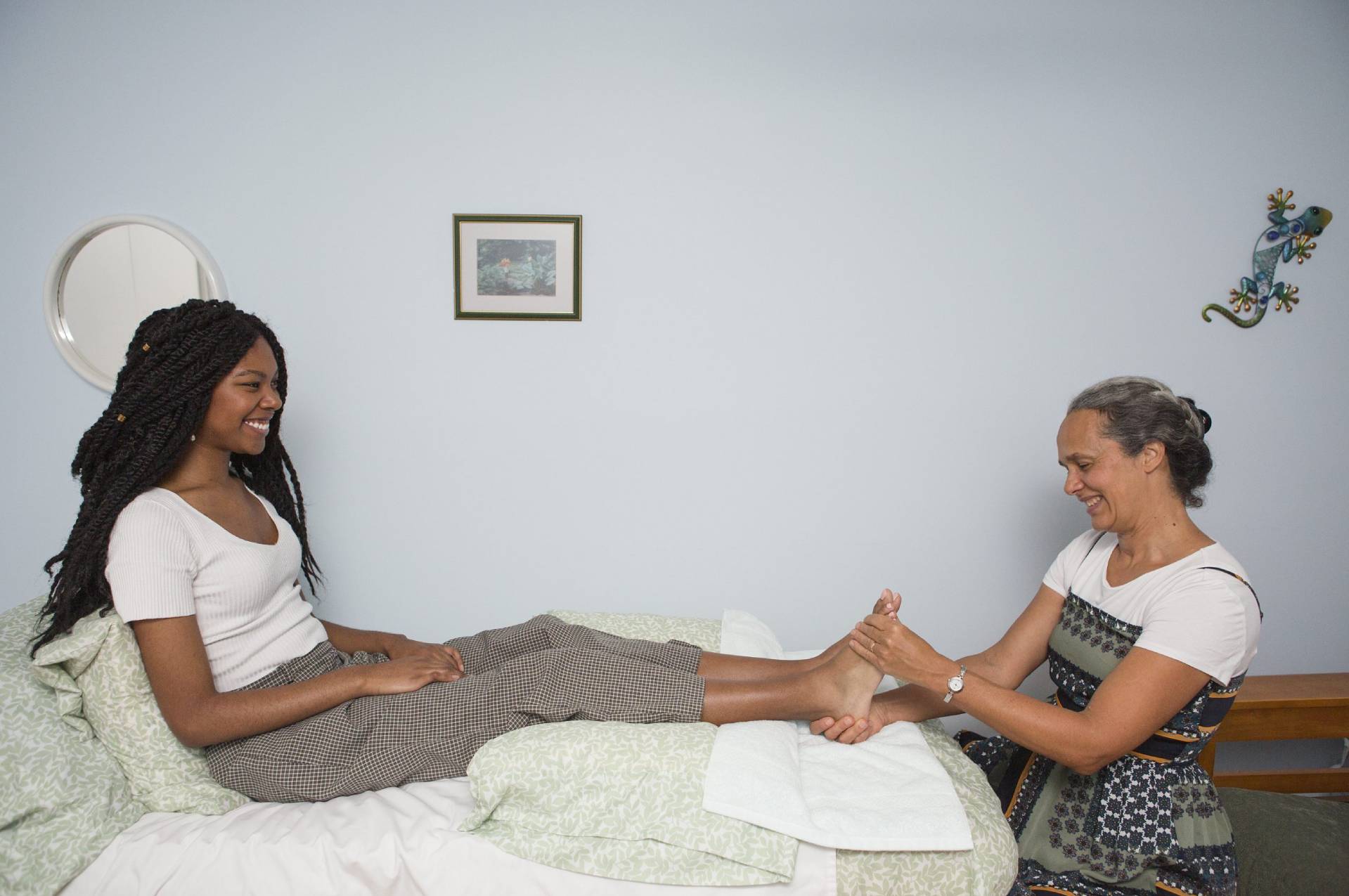Lymph Drainage Therapy (LDT)
Boost Immunity, Reduce Swelling, and Enhance Well-being with Gentle Manual Therapy in Ottawa
What is Lymph Drainage Therapy?
Lymph Drainage Therapy (LDT) is a specialized form of gentle massage that stimulates the lymphatic system, a vital network of vessels and nodes that helps remove waste and toxins from your body. By using light, rhythmic strokes, LDT encourages the flow of lymphatic fluid, reducing swelling, boosting immunity, and promoting overall health.
Anna is certified in Reflexology Lymph Drainage (i.e. lymph drainage performed on the reflexes on the feet) and uses this method primarily for treating lymphedema. Reflexology Lymph Drainage is proven by research to be more effective than lymph drainage performed on the body as it strengthens the lymph system from a neurological stand point.
Benefits of Lymph Drainage Therapy
Who Can Benefit from Lymph Drainage Therapy?
LDT can be beneficial for a wide range of people, including those experiencing:
- Lymphedema
- Edema (swelling)
- Chronic pain
- Fatigue
- Skin conditions
- Pre- and post-surgical recovery
- Immune system dysfunction
- Stress and anxiety
How Does a Lymph Drainage Therapy Session Work?
During an LDT session, you will lie comfortably on a massage table. Anna will use light, rhythmic hand movements to stimulate the flow of lymph fluid towards your lymph nodes. The technique is gentle and relaxing, and most people find it very enjoyable.
"Our mission is to help you progress toward self-awareness and optimal health. We offer compassionate, intuitive care, treating the body, mind, and spirit as a unified whole."
Anna Crandlemire, Manual Therapist
Dress in comfortable, loose clothing (no jeans or bulky material for CST sessions). Bring a water bottle and drink water before and after your session.
Your session takes place in a quiet, private setting. Clients remain fully clothed. The session is performed with the client reclining on a massage table or in a reclining chair. For CST and Lymph Drainage, the practitioner stands or sits at various times during the session at the client’s head, middle torso or feet.
Experiences differ for each individual, and from session to session. You may deeply relax and even fall asleep at times. Other times you may want to talk, and the practitioner may lead you through a therapeutic dialogue process. You may recall hidden memories, relive events, and express emotions. Some clients may not be aware of many sensations in their body as the tissues relax and re-balance, while others will notice more.
You may become very relaxed and drift off to sleep during your session. The practitioner will ask for you to give feedback of which reflexes on your feet are tender or sensitive as she works on your feet. Some clients will have many tender reflexes, while others may only have one or two. You also may feel chilly and need a blanket as your body relaxes.
Somatic Groundwork requires a floor area large enough for you to lay down in an “X’ position. You will be guided through grounding, breathing and yielding into the floor, and then through movement patterns. You will spend part of the time on the floor, and also in mid-level and standing positions.
Response to manual therapy varies from individual to individual and condition to condition. The number of sessions needed varies widely – from just one up to three or more per week over the course of several weeks. I recommend starting with 3 to 5 CST or Reflexology sessions, spaced either a few days apart for acute conditions to a week apart. Once clients start feeling better, they often continue with monthly sessions as part of their health care program.
Some insurance providers cover Reflexology treatments. Craniosacral Therapy, Lymph Drainage Therapy and Posture & Movement Therapy are not covered. Receipts will be issued for all sessions, and can be claimed as medical expenses on your tax return.
Testimonials
From Our Blog
Stay informed and inspired with our latest articles on manual therapy, wellness, and self-care.



